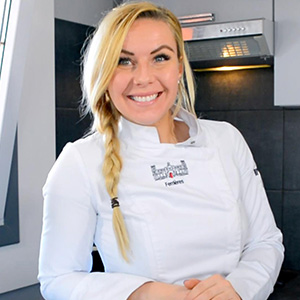» Fitness Park Actu' » Nutrition » Recettes »
Galette des rois healthy
 10min 10min |
 8 pers 8 pers |
 Faible en sucre Faible en sucre |
Valeurs nutritionnelles :
Par part : 277 cal - 8g protéines - 17g glucides - 20g lipides
Ingrédients :
- 1 pâte feuilletée complète bio
- 40g de sirop d'agave
- 200g de poudre d’amande
- 2 compotes sans sucre ajouté
- 3 oeufs
- 1 fève
Astuce :
Personnalisez votre galette en y ajoutant des fruits ou des pépites de chocolat
RECETTE :
-
- Étaler la pâte feuilletée au maximum. Découper 2 ronds. Réserver
- Dans un bol, mélanger le sirop, les compotes, 2 oeufs, puis la poudre d'amande
- Étaler cette pâte sur un des deux ronds de pâte feuilletée
- Insérer une fève dans la crème
- Humidifier les bords de la pâte
- Déposer le 2ème rond sur le 1er, puis sceller les deux en pressant les bords humidifiés
- Avec un jaune d'oeuf, badigeonner le dessus de la galette
- Avec la pointe d’un couteau, faire un dessin sur la pâte
- Enfourner 40 min à 180°C
PARTAGER L'ARTICLE
 Offre spéciale : Les 4 premières semaines à 19€
Offre spéciale : Les 4 premières semaines à 19€




